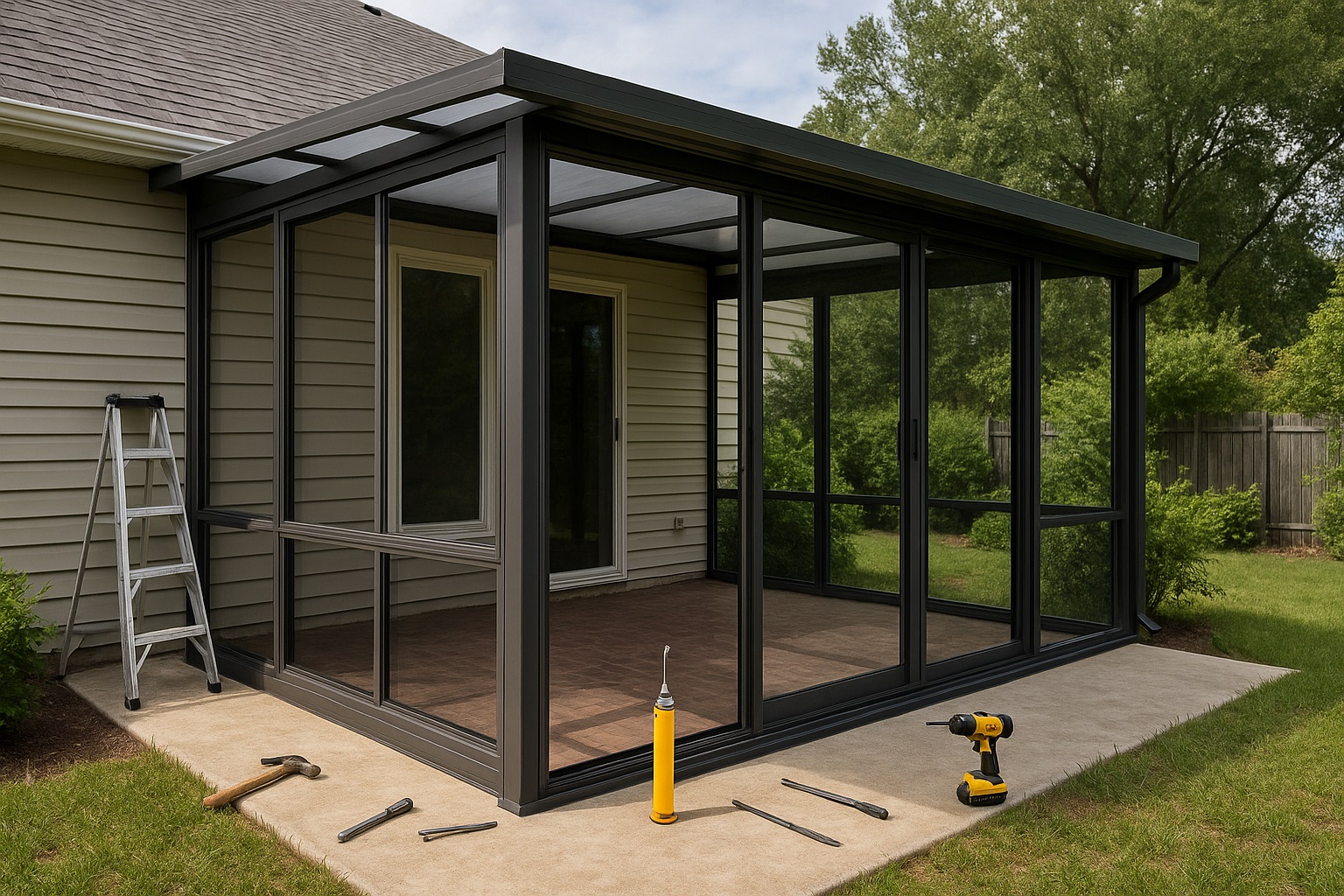
How to Install & Replace Patio Enclosure Systems
How to Install & Replace Patio Enclosure Systems

Transforming your patio into a more usable, weather-protected space is often easier than people think. A well-designed enclosure not only enhances comfort but also extends the life of your outdoor area. Today, I want to share my insights, as an interior architect who has worked on countless residential projects, on patio enclosure installation and replacement. If you’ve ever wondered whether this is something you can manage on your own or when it’s better to call in the pros, this guide will walk you through the essential details.
Why Patio Enclosures Matter More Than You Think
I’ve seen homes where a patio enclosure literally transformed the way families used their outdoor space. It turns an underutilized corner into a year-round living area. Think about it—protection from wind, rain, and insects while still letting in natural light. Beyond comfort, enclosures can add measurable value to your property. Potential buyers often see it as an additional “room,” which makes the investment worth it.
Before You Start: Planning the Project
Any installation project starts with planning. You can’t just order a kit and start drilling holes. First, measure your space with care. Check the slope of the ground, evaluate structural conditions, and make sure local regulations allow for the type of enclosure you’re considering. Believe me, skipping this step can cost you both time and money later.
- Measure Twice: Length, width, and height all matter. Don’t assume symmetry; many patios are slightly off-square.
- Check Permits: Some municipalities require approval before construction. Better safe than dealing with a fine.
- Consider the Climate: If you’re in a snowy region, you’ll need a stronger roof system compared to mild, coastal areas.
Tools & Materials You’ll Need
You don’t need a full workshop, but having the right tools at hand makes everything smoother. Based on my experience, here’s a checklist:
- Measuring tape & level
- Power drill with masonry and wood bits
- Hammer and screwdrivers
- Caulking gun & weather-resistant sealant
- Protective gear (gloves, safety glasses)
As for materials, most kits come with aluminum frames, tempered glass panels, or acrylic inserts. If you’re replacing an older system, make sure you dispose of old glass responsibly—it’s heavier and more fragile than most people expect.
Step-by-Step Patio Enclosure Installation
Now let’s get practical. Every home and enclosure system differs slightly, but the process generally follows these steps:
1. Prepare the Surface
Sweep, wash, and level the patio floor. Small cracks in the concrete should be sealed before installing the base rails. An uneven surface will only cause misalignment later.
2. Install the Base Tracks
The base track is the backbone of your enclosure. Mark the exact line, drill anchor holes, and secure the track with masonry screws. Double-check with a level—if the base is crooked, the whole structure will follow.
3. Set Up the Vertical Frames
Attach the uprights to the base tracks, ensuring they align properly with the roof beam. It’s at this stage where a second set of hands really helps. In some of my earlier projects, clients tried doing this alone, and it almost always led to wobbly frames.
4. Fit the Roof System
Depending on your enclosure design, you may have polycarbonate sheets, insulated panels, or glass. Slide them into place and secure with the provided connectors. Pay attention to drainage—water should flow away from the house, not toward it.
5. Insert the Wall Panels
Wall panels are usually slotted between vertical frames. Handle glass with care—use suction lifters if possible. For acrylic or mesh screens, make sure the edges are sealed tightly to prevent insects sneaking in.
6. Seal & Finish
Run a bead of weatherproof sealant along all joints. Don’t rush this step; sealing protects against leaks and drafts. Afterward, clean the glass and check for any loose fittings. A final inspection ensures safety and durability.
When to Replace Instead of Repair
Sometimes, it’s not about installing a new system but replacing an old one. I’ve walked into homes with enclosures that were decades old—aluminum frames corroded, glass panes fogged, and seals crumbling. In these cases, replacement is more cost-effective than patchwork repairs. Signs you need a full replacement include:
- Persistent water leaks even after resealing
- Severe corrosion or rust on frames
- Cracked or foggy glass panels
- Poor insulation making the space unusable in winter or summer
DIY vs. Professional Installation
I often get asked whether it’s worth hiring a contractor. My honest answer: it depends. If you’re comfortable with tools and have some experience in home projects, a DIY patio enclosure installation is possible with patience and proper planning. However, for larger, more complex enclosures with electrical elements (like integrated lighting or ceiling fans), a professional installer is a safer choice. The margin of error is slim, and mistakes can be expensive.
Maintenance Tips for Longer Lifespan
Once installed, regular maintenance ensures your enclosure stays in top condition. Here’s my short list:
- Clean glass panels monthly to prevent dirt buildup.
- Lubricate sliding doors and window tracks twice a year.
- Inspect seals annually, especially before heavy rain seasons.
- Repaint or re-coat aluminum frames if you notice oxidation.
These small steps go a long way in avoiding costly repairs.
Common Mistakes to Avoid
Through years of consulting on patio projects, I’ve noticed the same mistakes popping up:
- Ignoring drainage: Poor slope design often leads to water pooling inside the enclosure.
- Skipping permits: Trust me, you don’t want city inspectors asking questions halfway through your build.
- Using low-quality sealants: It may seem like a small detail, but cheap sealants fail quickly.
- Underestimating weight: Glass is heavy, and improperly secured frames can be dangerous.
Final Thoughts
A patio enclosure is more than just a home improvement—it’s a lifestyle upgrade. Whether you choose to install it yourself or work with a contractor, the payoff is immediate: comfort, aesthetics, and added property value. From my perspective, taking the time to plan and execute correctly is what makes the difference between a patio you “use sometimes” and one that becomes your favorite corner of the house.
If you’ve been thinking about patio enclosure installation or replacement, now is the perfect time to start planning. Have any questions or experiences you’d like to share? Drop them in the comments below—I’d love to hear your perspective.






Leave a Reply
You must be logged in to post a comment.